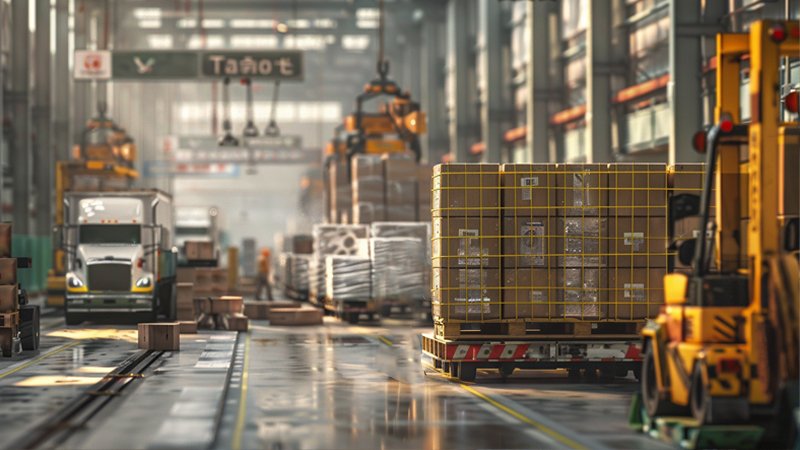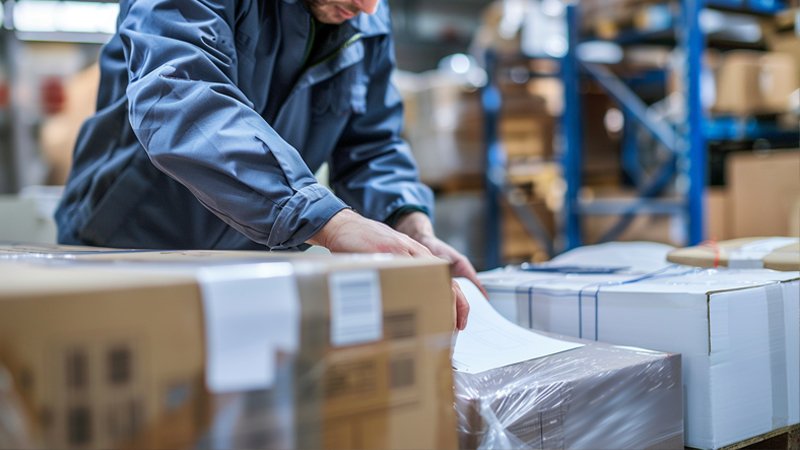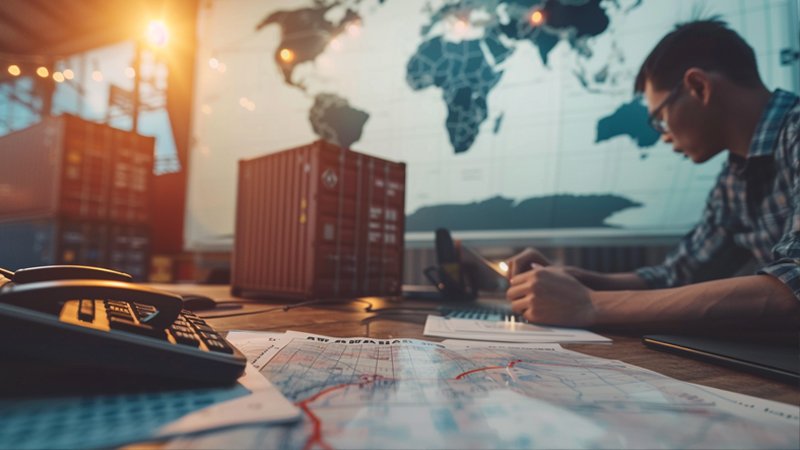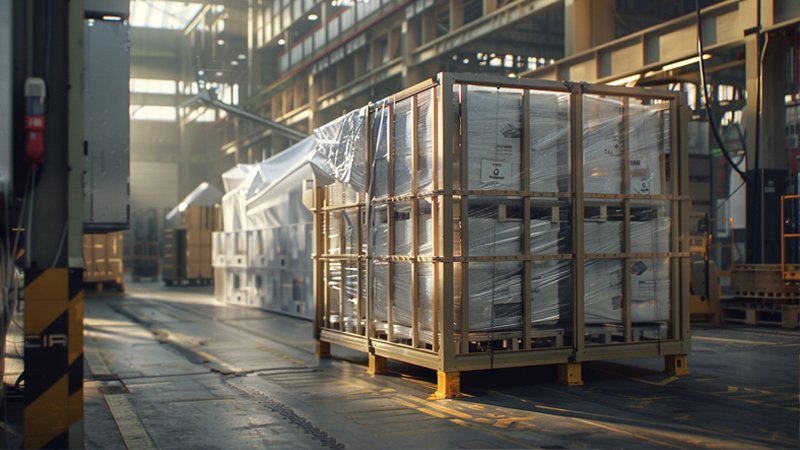
I recently faced the challenge of shipping a 55kg item from China to the US and learned that careful planning is key.
Shipping a 55kg item successfully involves a clear step-by-step process, choosing the right method, ensuring safety, and accurately calculating costs.
Let's break down the entire process into manageable parts.
What are the specific steps for shipping bulk items weighing 55kg from China to the US?
I discovered a detailed, step-by-step process that ensures smooth handling and transportation of a 55kg shipment from China to the US.
Follow these steps: verify product specs, pack securely, complete documentation, and choose a reliable forwarder.

When I first set out to ship a heavy item, I realized that every step matters. First, it's essential to verify the product specifications and ensure quality. This means confirming that the item meets all export standards1 and is ready for long-distance travel. Next, proper packaging is crucial. I use sturdy boxes, cushioning materials, and sometimes pallets to secure the 55kg item against any potential damage during transit.
Then comes the documentation phase—prepare commercial invoices, packing lists, and export licenses. I always double-check these documents because any error can lead to customs delays. Coordinating with a trusted freight forwarder2 is the next key step. Their expertise helps streamline the pickup, consolidation, and transportation processes. I schedule the pickup, choose an appropriate shipping method3, and ensure that the item is insured for the journey.
Communication with the logistics provider is maintained at every stage to handle any unexpected issues promptly. Additionally, I monitor the shipment through tracking systems to stay updated on its progress.
| Step | Key Activity |
|---|---|
| Product Verification | Confirm quality and export readiness |
| Packaging | Use sturdy, protective materials |
| Documentation | Prepare accurate invoices, lists, and licenses |
| Coordination | Engage a reliable freight forwarder |
| Communication & Tracking | Maintain updates and monitor shipment status |
By following these detailed steps, I've managed to simplify the complex process of shipping a bulky item internationally.
Which shipping methods are best suited for heavy and bulky items?
I learned that different shipping methods have unique advantages for heavy items, with sea freight and air freight being the most common options.
Sea freight is cost-effective for non-urgent shipments, while air freight offers faster delivery at a premium price.

When choosing a shipping method for a heavy 55kg item, I consider the trade-offs between cost and delivery speed. Sea freight4 is typically the go-to option for bulky shipments. It may take longer, but the cost per kilogram is usually much lower than air freight. This method is ideal if you're not under a strict deadline. On the other hand, air freight offers much faster transit times, which is crucial if the item is time-sensitive. However, the cost can be significantly higher due to fuel surcharges and handling fees.
I also evaluate factors like the reliability of the carrier, their tracking capabilities, and the overall service quality. Sometimes, a combination of both methods—using air freight for a portion of the shipment and sea freight for the remainder—can optimize both cost and time. For instance, if only part of the shipment requires immediate delivery, I might split the shipment accordingly.
| Shipping Method | Key Benefit |
|---|---|
| Sea Freight | Lower cost per kilogram, ideal for heavy loads |
| Air Freight | Fast delivery, suitable for urgent shipments |
By comparing these methods, I choose the one that best fits my needs and budget while balancing speed and cost.
What measures can you take to ensure the safety and compliance of large shipments?
I discovered that safety and compliance are paramount, requiring robust packaging5, proper labeling6, and strict adherence to regulations.
Ensure safety by using high-quality packaging, proper labeling, insurance, and complying with international shipping regulations.

When shipping a heavy 55kg item, I take several measures to guarantee its safety and regulatory compliance. First, I invest in high-quality, durable packaging that can withstand the rigors of long-distance transport. This often includes double-walled boxes, protective cushioning, and sometimes wooden crates or pallets for extra security. Proper labeling is essential too—I clearly mark the package with handling instructions and weight details to avoid mishandling.
I also ensure that all necessary documentation complies with both Chinese export and US import regulations. This includes accurate commercial invoices, packing lists, and any required certifications. To further secure the shipment, I purchase comprehensive insurance that covers potential damages or loss during transit.
Moreover, I work with reputable freight forwarders who have a strong track record in handling large shipments. Their expertise ensures that all regulatory requirements are met, and they provide real-time tracking updates, which give me peace of mind. Regular communication with the carrier helps address any issues before they become problems.
| Safety Measure | Benefit |
|---|---|
| Robust Packaging | Prevents damage during transit |
| Proper Labeling | Ensures careful handling and compliance |
| Comprehensive Documentation | Meets regulatory standards |
| Insurance Coverage | Mitigates financial risk from potential losses |
By taking these proactive measures, I can ensure that my shipment is both safe and compliant throughout its journey.
How can you calculate the costs and time required for shipping bulky items from China?
I found that accurate cost and time estimation involves gathering multiple quotes, considering tariffs, and factoring in transit times and handling fees.
Calculate costs by comparing quotes, accounting for tariffs, handling fees, and transit times to get an accurate shipping estimate.

When planning to ship a 55kg item, I begin by requesting detailed quotes from several freight forwarders. This helps me understand the base cost of shipping. I then add any additional fees such as fuel surcharges, handling charges, and tariffs that may apply. It's important to ask for a full breakdown of all costs so there are no surprises later.
I also consider the transit time based on the shipping method selected. Sea freight, for instance, may take several weeks, while air freight can deliver within days, though at a higher cost. I factor in these time differences to determine how they affect my business needs. Additionally, I review past shipments and use online freight calculators to compare estimates.
Understanding the cost per kilogram7 and the overall weight, including packaging, allows me to refine my budget. I also account for potential delays or additional costs during customs clearance. By consolidating this data, I create a comprehensive overview that helps me decide on the most cost-effective and timely shipping option.
| Cost Factor | Consideration |
|---|---|
| Base Freight Quote | The initial shipping rate |
| Additional Fees | Fuel surcharges, handling, tariffs |
| Transit Time | Delivery duration based on chosen method |
| Total Weight | Includes product plus packaging weight |
By carefully analyzing these elements, I can accurately estimate the overall cost and time required to ship my bulky item.
Conclusion
Smart planning, accurate cost estimation, and robust safety measures ensure smooth shipping for heavy items.
-
Learning about export standards is crucial for ensuring compliance and avoiding customs issues during shipping. ↩
-
Understanding the role of a freight forwarder can greatly enhance your shipping experience and efficiency. ↩
-
Exploring various shipping methods can help you choose the best option for your specific needs and budget. ↩
-
Explore the benefits of sea freight, especially for heavy items, to understand its cost-effectiveness and suitability for non-urgent shipments. ↩
-
Exploring this resource will provide insights into how robust packaging can enhance safety and compliance during shipping. ↩
-
Understanding the significance of proper labeling can help ensure compliance and prevent mishandling of shipments. ↩
-
Understanding the significance of cost per kilogram can help you optimize your shipping budget and make informed decisions. ↩




